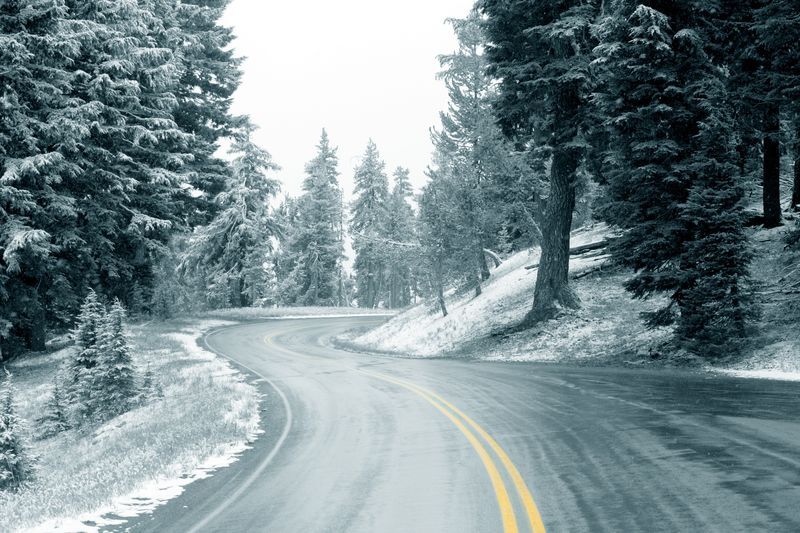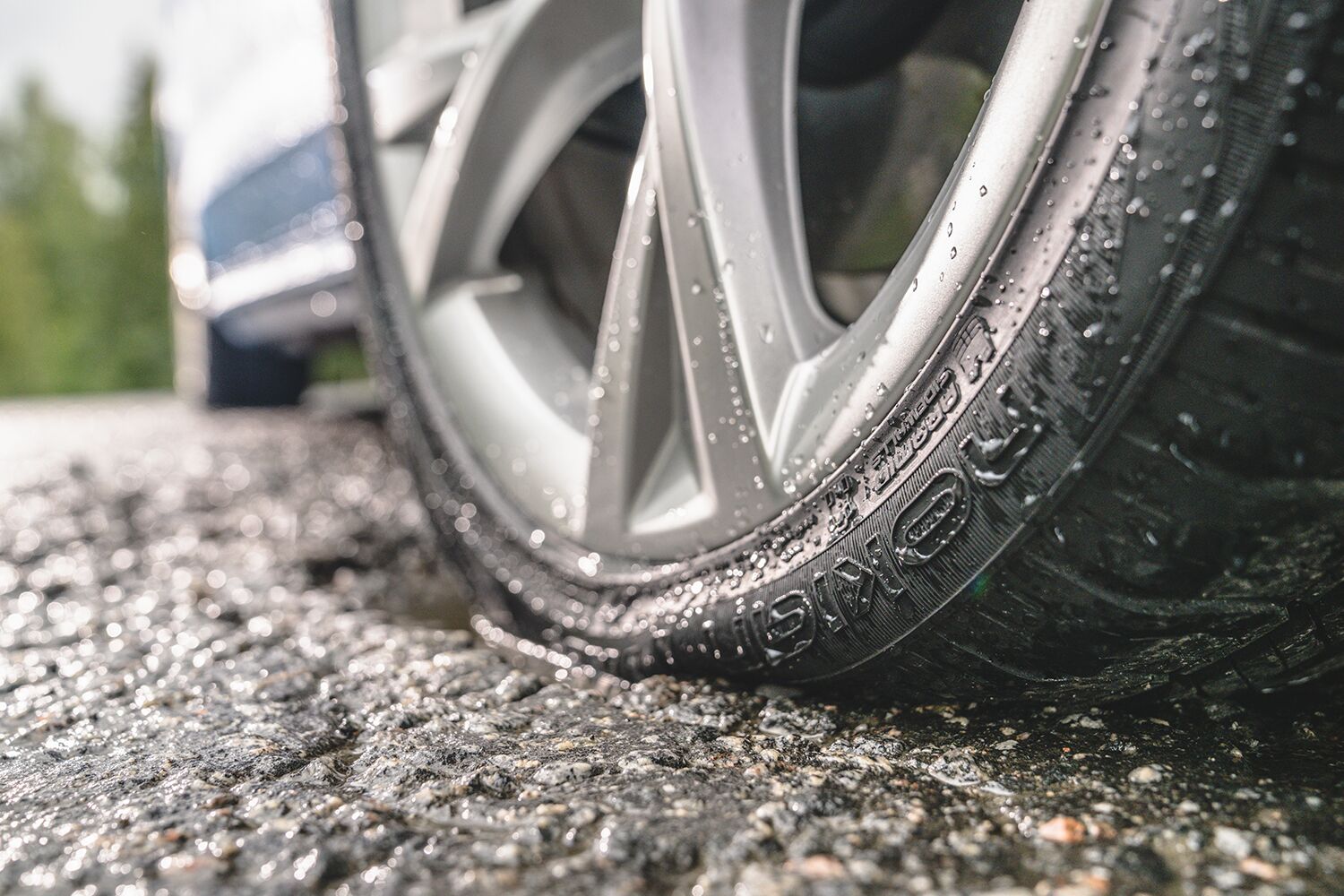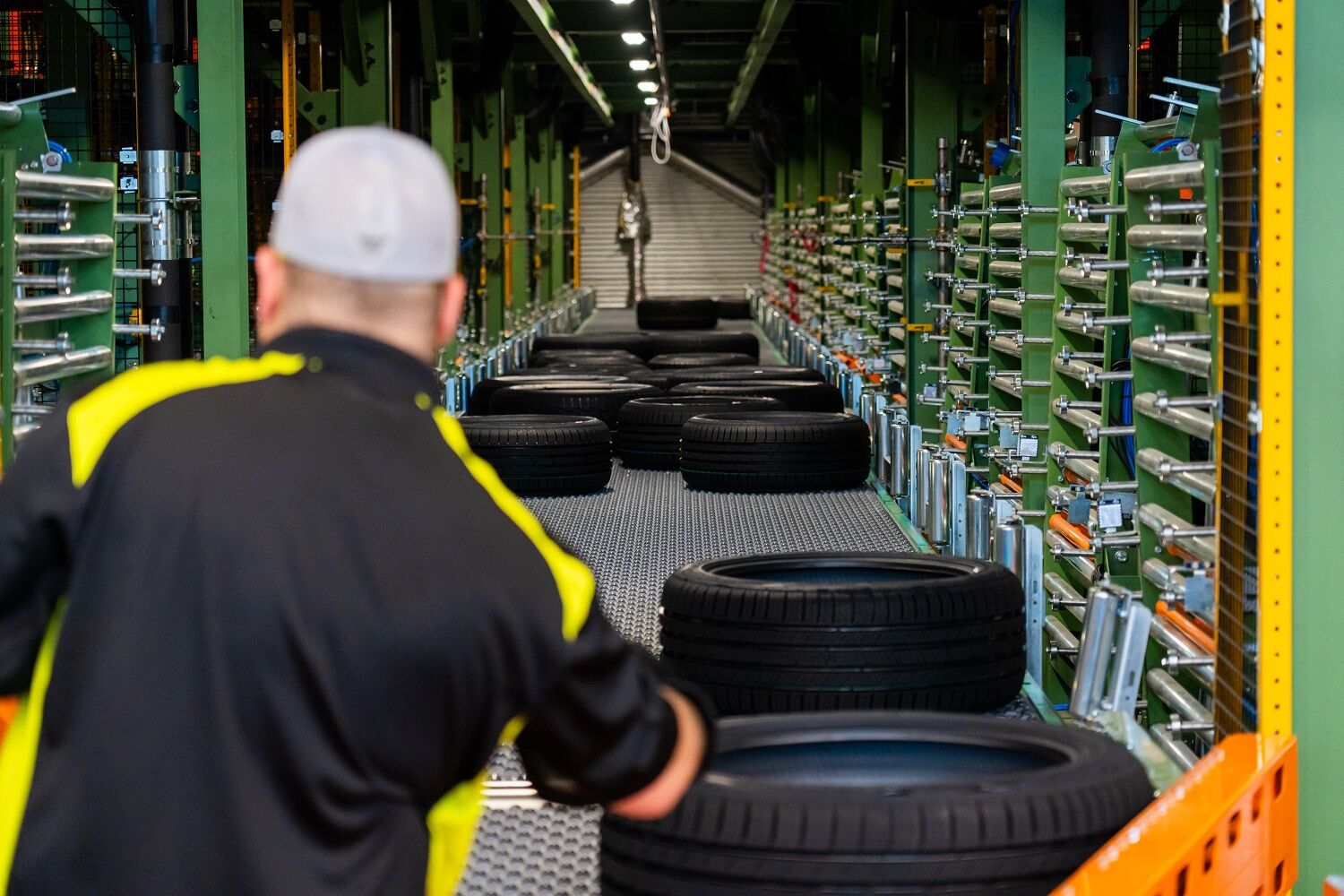
At Nokian Tyres, we're thinking about the journeys we plan to take in 2023: through rain, mud and sudden snow. We craft tires to prepare you for every weather condition, and with our low rolling resistance tires, you'll save fuel while you drive.
December 28, 2022 - A new year offers an opportunity for a fresh start. January brings new energy, fresh perspective, and perhaps even a return to the healthy habits we promised we'd maintain last year.
At Nokian Tyres, we're thinking about the journeys we plan to take in 2023. You might be doing the same -- dreaming of destinations, mapping routes and packing your mental suitcase for the miles that lie ahead.
Sometimes the best planning tool is to anticipate the challenges that will come with the joy of the journey. We're here to help! Here are some common issues drivers face on the road, as well as the solutions we've devised to keep your travel running smoothly.

Rocky Roads
Winter's notorious freeze-thaw cycle turns even the best-maintained roads into pothole-pockmarked minefields. Concrete craters can delay the journeys of even the most prepared drivers -- or at least make those trips a lot less pleasant.
We have a plan for that. Many of our tires possess Aramid fibers, the same material used in protective vests and the aerospace industry. Aramid strengthens tires against impact from potholes, curbs and road hazards, decreasing the likelihood of a blowout. It's an investment in your peace of mind, especially during pothole season.
As you prepare for your winter and spring journeys, take a moment to learn about what's in your tires. No Aramid? Check out our list of SUV and light truck tires, or the Aramid-reinforced Nokian Tyres One passenger tire.
Skidding Toward Danger
Rain can dampen the brightest journeys. That's especially true when water collects on the road and increases the risk of hydroplaning. As speed increases, your tire's contact with the road decreases. A new tire running at 75 miles per hour only has about 47 percent road contact in an eight an inch of water. At 45 mph, that number leaps to 74 percent. A worn tire at 75 miles per hour has a shockingly low contact rate of just six percent.
The best defense against hydroplaning? A fresh and effective set of tires. The tread patterns of our all-season tires like the Nokian Tyres One are designed to remove rain from the road's surface and channel it away before it causes havoc. If you live in an area with unpredictable fall weather, consider an all-weather tire like the Nokian Tyres WR G4 -- it's designed to work not only in rain, but also in snow and slush (slushplaning can be a real problem, too).

The Nokian Tyres One thrives on rainy roads. It's made at our North American factory in Dayton, Tennessee.
Sudden Snow
Let's talk about that last point for a second. So-called "all-season tires" aren't actually meant for all four seasons unless you live pretty far south. They lose effectiveness in temperatures below 45 degrees Fahrenheit (7 degrees Celsius), and their tread patterns aren't built to handle snow and slush.
We offer a solution for your trips into wintry territory -- the all-weather tire. Like an all-season tire, it's built with all four seasons in mind. But it also has winter capabilities and is certified with the three-peak mountain snowflake, a symbol that indicates it's suitable for wintry weather.

This is the three-peak mountain snowflake emblem, the indicator that a tire is certified for winter use.
Nokian Tyres is on the fifth generation of our flagship all-weather tire, the Nokian Tyres WR G4. Its winter capabilities come from an asymmetrical tread pattern. One side looks like an all-season tire, while the inner shoulder is built to carve through snow and slush. A versatile tread compound stays soft in much colder conditions than a standard all-season tire.

A look at the asymmetrical tread pattern of the all-weather Nokian Tyres WR G4.
Fuel Costs
Fueling our cars can drain our wallets. When gasoline prices are high, the cost discourages us from extending our journeys and connecting with the people and scenery we adore.
High-quality tires can help with that, thanks to a phenomenon called rolling resistance. It's defined as the energy required to move your car along the road, and it drains your gas tank: Rolling resistance accounts for between four and 11 percent of your vehicle's fuel consumption, according to the U.S. Department of Energy.
More than 90 percent of Nokian Tyres products are in the lowest categories of rolling resistance. That means each journey on our tires uses less energy than the average tire. That means lower fuel consumption and fewer emissions.
“Rolling resistance has a huge impact on fuel consumption,” says Nokian Tyres Technical Customer Service Manager Matti Morri. “A tire with correct pressures and a low rolling resistance classification can save up to two-thirds of a gallon for every 300 miles (half a liter of fuel per 100 kilometers) when compared to the lowest-performing tires.”
Whatever you're ready for in 2023, we're ready to journey with you -- through rocky roads, standing water, slick surfaces and high gas prices. Wherever your adventures take you, we're eager to come along for the ride.
Did you find this article interesting? Share it with your friends and family on Facebook:
Please remember that it is the driver’s responsibility to ensure their tires are safe and suitable for their vehicle and to follow the vehicle’s manufacturer´s guidelines for proper use and maintenance. Consult your closest Nokian Tyres dealer or your vehicle’s manufacturer for specific advice.


